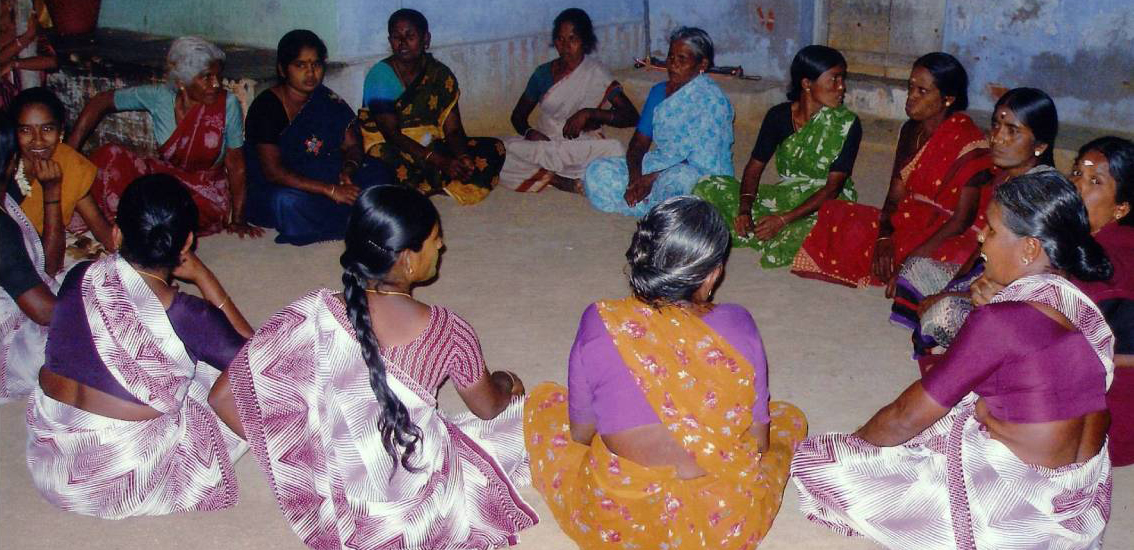Unique Programs of HEAL Movement
Women Empowerment
Background:
Soon after completing the formation and registration process, HEAL Movement engaged its volunteers to work in villages located in Rajakkamangalam and Kurunthancode blocks of Kanyakumari district. The Director used to convene regular meetings of volunteers to assess and evaluate the progress made in those villages. The regular meetings highlighted the importance of bringing rural women together to improve their overall well-being and that of the rural masses as well. We realized that women were more resilient and able to address civic issues, save money, access credit, develop financial literacy, and invest in income-generating activities. Therefore, we concluded that women empowerment programs were the need of the hour to promote capacity building, self-esteem, access to information and resources, and community action to position themselves as confident decision-makers and leaders in their respective homes and communities. However, we faced financial constraints in carrying out our activities.
Community Mobilization and Organization of Women:
In 1987, we had the opportunity to partner with the Swiss Catholic Lenten Fund (SCLF) to continue our community organization activities among women in 40 villages of Rajakkamangalam and Kurunthancode blocks. We chose to work in villages where people from the Scheduled Caste (SC) community lived exclusively. This intervention, with SCLF support, helped HEAL Movement in motivating and redefining its role and focus in involving the community in a participatory development process.
Our interventions, starting from 1986, resulted in the emergence of 28 Women's Associations, 9 youth Associations, and 6 Agricultural Labourers Associations in the target villages. These Community-based Organizations (CBOs) addressed and resolved numerous social and economic issues, including civic issues, family disputes, and low wages. However, the experiences gained emphasized the importance of forming an umbrella organization at the apex level for coordination and effective follow-up actions.
In 1992, HEAL Movement facilitated the formation of a Federation called Women's Development Movement (WDM) involving 920 women. The federation consisted of village-level women sangams and involved them in various issues like title over agricultural lands, house sites, access to burial grounds, street lights, drinking water, sanitation facilities, access to government schemes reserved for SCs, etc., through the submission of petitions, approaching officials of concerned line departments, litigations, organizing protests.
By 1995, WDM had been capacitated to support itself and defend its cause more effectively than was the case a decade ago. In order to avail the benefits allotted by the government to Self Help Groups (SHGs), WDM reconstituted its women sangams into smaller units of 60 SHGs.
Meanwhile, in 1996, HEAL Movement encountered the suffering of SC communities in Tirunelveli District in terms of the worst forms of social and economic discrimination and marginalization compared to the same category of people in Kanyakumari District. Hence, we started functioning in 16 exclusive SC villages and 24 other villages dominated by the communities of Palmyra climbers. The criteria for selection were based on resolving the caste disparity between the two sections.
Our interventions resulted in the formation of 58 women SHGs in Tirunelveli district. In 2000, we facilitated the formation of a Federation called Awakening of Rural Women Development Movement (ARWDM) in Radhapuram taluk of Tirunelveli district, similar to WDM in Kanyakumari district.
HEAL Movement organized Dalit women from 16 villages and structured them under Women's Associations. We imparted training focused on the realization of their fundamental rights as per the Indian Constitution and the improvement of livelihood options. We also promoted savings, credit, and bank linkages at the micro level.
Key Interventions:
Our interventions also included:
- Formation of Sangams
- Formation of 92 SHGs
- Capacity Building Training
- Income Generation Activities
- Alternative Skill Development
- Promotion of Micro Credit
- Formation and Strengthening of CBOs
- Campaign, Networking and Roundtable dialogues

Uniqueness of this project:
This federation not only empowers women but also elevates the community to the next level by fostering the realization and assertion of their fundamental rights, supported by the knowledge gained from HEAL. Therefore, it can be asserted that these Women's groups are actively working towards sustainability. However, additional strengthening is needed to solidify this as a sustainable success model.
